There’s a good chance you’ve seen them – tiny red bugs on concrete sidewalks or covering your plants in late spring. These miniscule critters can be quite the nuisance, but just what are they and are they harmful?
Welcome to the curious world of the clover mite, a tiny arachnid with some very unusual traits that can create small oceans of red. Let’s take a look at what they are and why you might want to get rid of clover mites.
Getting to Know Clover Mites
You can find this common species of mite all over the world, and its tiny size means you might not have even noticed them. Here’s everything you need to know about these mysterious pests.
See Also: How to Get Rid of Spider Mites
What Are Clover Mites?
Clover mites (Bryobia praetiosa) are tiny arachnids, and when we say tiny, we mean tiny. Adult clover mites measure a mere .03 inches long. As a result, they look like tiny, brightly-colored mobile dots. The eggs and juvenile mites are a bright red shade, while the adults are a duller reddish-brown.
As is the case with some bugs, there are no male clover mites. Instead, the females reproduce through a process called parthenogenesis. This means the eggs aren’t fertilized and still grow embryos.
Females are able to lay eggs as soon as they reach adulthood. A single female can lay 70 eggs during their short lives. Unsurprisingly, this means populations of clover mites can explode in a very short time.
These oval-shaped arachnids are often mistaken for insects because their front legs face forward and look more like antennae because of this positioning. If squished, they leave a red stain that is merely caused by their pigmentation.
What Attracts Clover Mites?
Clover mites are attracted to (and feed upon) the plant juices of more than 200 species of plants, especially grasses, clovers, and many common “weed” plants such as dandelions.
They’re also drawn by excessive amounts of nitrogen in the soil. Moisture and decomposing matter can be just as much of a draw, often resulting in them congregating in areas such as mulch and compost piles.
Why Do Clover Mites Like Concrete?
Clover mites are sometimes referred to as concrete mites because they’re often seen swarming on concrete surfaces. However, they’re not attracted to concrete itself. Instead, they seek out the cracks to lay their eggs in.
A clover mite is more active at warmer temperatures. Thus, south-facing concrete surfaces prove especially attractive because they can soak up some of that heat.
Do Clover Mites Bite?
Clover mites don’t bite. They’re piercing plant pests and lack the proper mouthparts to bite. In addition, their tiny size means they’d be unable to damage human skin even if they were capable of biting.
Related: Do Bird Mites Bite?
So What Do Clover Mites Eat?
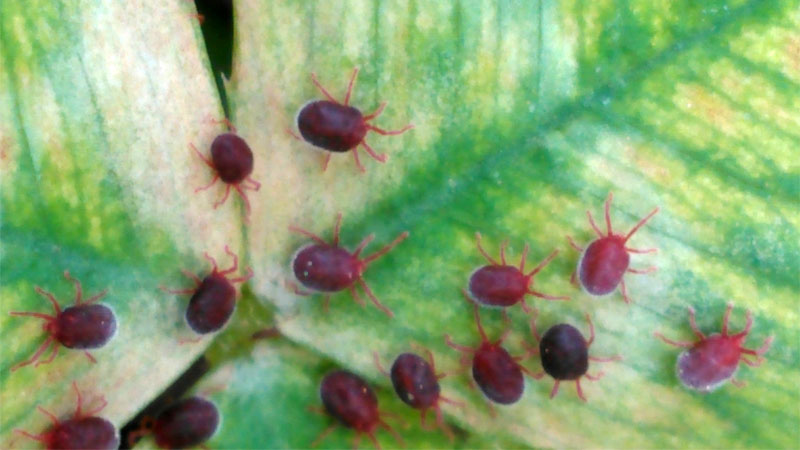
Clover mites feed off of plant sap and target more than 200 different plants. Some common targets include: alyssum, clovers, daffodil, dandelion, grasses, ornamental flowers, primrose, salvia, shepherd’s purse, and strawberries.
They’re also known to feed on algae and mold.
Can Clover Mites Jump or Fly?
This question is one that comes up often for a rather humorous reason. Clover mites are incapable of flying or jumping due to their (mostly) short legs.
However, they’re so small and light that sometimes a stiff breeze will pull them off of the surface they were on and send them flying.
Are Clover Mites Dangerous?
Clover mites are completely harmless to you and your plants. They’re not known to carry any type of disease or parasite and won’t kill the plants they feed upon. Likewise, they won’t cause any damage if they get inside your home.
However, their feeding habits may make your plants look a little splotchy if the mites are present in large numbers. This damage is purely cosmetic, and the plant won’t suffer like it would at the hands of larger pests such as aphids or grasshoppers.
Likewise, squishing one will leave a little red stain behind. This can usually be cleaned off with a little soapy water and will only look bad on lighter colored objects.
Why Are There Clover Mites in My Home?
Clover mites are most often spotted outdoors, but there are times they can migrate inside. When this happens, it’s rarely just one or two mites. In fact, your kitchen or bathroom may end up looking like it has chicken pox! While this is rare, it’s still a frustrating experience when it does happen.
Clover mites don’t actually mean to enter your home. It most commonly happens when they’re looking for cracks in your exterior walls to hide their eggs in and end up finding an entry point. Once inside, they might stick around if they find mold, overwatered indoor plants, and/or moisture.
They can also wander inside trying to escape heavy rains or extreme temperatures. Finally, they can sometimes come indoors in the autumn when their food sources begin dying out.
Clover Mites vs Chiggers
Chiggers (genus Trombicula) are tiny orange mites that are only about .01 inches long, making them nearly microscopic. While adult chiggers feed on plants just like clover mites, the larvae are parasitic.
You will be able to see a clover mite with the naked eye, despite being smaller than the head of a pin. However, chiggers are so small you will probably not even be able to see them even if you’re looking directly at one.
Also, unlike clover mites, chigger infestations are highly problematic and the larvae can cause a number of skin issues as they feed on skin cells.
See Also: What Do Dust Mites Look Like?
How Long Does a Clover Mite Infestation Last?
This question can be a little hard to answer because several factors affect clover mite activity and lifespans.
An adult female clover mite will lay her eggs in a warm, protected space, usually exposed to the sun to help maintain incubation temperatures during the winter. The eggs will automatically go dormant if temperatures fall below 75 degrees.
When the eggs hatch in spring, the resulting larvae will reach adulthood in only two weeks and a mite will generally live about a month total when outdoors under ideal situations. However, adults only live for around two weeks in said conditions and will generally die in only a couple days indoors.
But here’s where things can get a bit confusing. Temperatures above 102 degrees will cause clover mites to aestivate, which is a state of dormancy similar to hibernation (but in summer rather than winter).
This means a clover mite population might seem to vanish during the summer, even though it’s not really gone. The mites then resume activity in the fall, although autumn infestations tend to seem smaller and may go entirely unnoticed.
So technically speaking, a clover mite infestation doesn’t go away, even though you only tend to notice it in late spring and possibly early autumn. Additional factors, such as weather and the presence of natural predators can also have a huge effect on how long clover mite infestations will last.
Getting Rid of Clover Mites
Despite their large numbers, an infestation of clover mites can be incredibly easy to eliminate. The following methods include some quick and easy options as well as many more traditional (and possibly overkill) methods.
From Your Home
Indoor infestations don’t happen often, but they can be annoying when they do. The good news is that clover mites can only survive a few days indoors before starving, so you can often either wait out the infestation or simply remove the mites you see.
Glue Traps (AKA Sticky Traps)
These little strips are quite popular, although they can also be a bit of a headache if you have children or pets. They’re simply sheets with adhesive on one side, much like tape. Lay them down and any critter that crawls onto them will get stuck and die.
They’re cheap and effective, but they can also easily get stuck in hair or fur. Keep them away from curious hands or paws unless you want to deal with a frustrating bath time and possible haircut.
- Fruit Fly Trap: bright color attract flying insects, and high quality glue keeps...
- Easy to use: the fruit fly traps for indoors with sharp bottom can be inserted...
- Safe and non-toxic flying insect trap: gant traps for house indoor use bright...
Soap and Water
When dealing with clover mites on countertops and similar surfaces, it’s an easy matter to simply wash them off. Warm, soapy water is enough to kill them and remove any smears. Plus it gets your counter clean in the process.
Note that you can use other cleaning products, such as Clorox wipes to the same effect if the target surfaces aren’t sensitive to household chemicals.
Steam Clean
When it comes to indoor pests, a good steam cleaner (our favorite) is one of the most effective weapons in your arsenal. Clover mites have a very low heat tolerance, dying when exposed to temperatures of 102 degrees or higher.
They’re also unable to survive in water. And the most damage they can do is leave a little red smear on your light colored surfaces.
So what happens when you go after them with a steam cleaner? You’re simultaneously drowning and frying them while also safely removing them (and any smears) from your fabrics and upholstery.
Seriously, investing in a steam cleaner gets your house far cleaner than a regular vacuum and can kill all sorts of indoor pests, such as bed bugs, carpet beetles, dust mites, and even roaches, so we recommend every household invest in one.
- CLEAN. DISINFECT. SANITIZE. DEGREASE. DEODORIZE. ANY SURFACE. CHEMICAL-FREE.
- POWERFUL STEAM CLEANER: up to 275°F/135°C. Best multi purpose steamer for...
- HEAVY-DUTY & LARGE CAPACITY: Up to 50 minutes of cleaning time per fill up.
Vacuum
So what happens if you don’t have a good steamer and can’t afford one right now? That trusty old vacuum can still be pretty effective in its own right. For the best bang for the buck, it’s hard to beat a Shark vacuum. The suction is too powerful for clover mites to resist, and they’re easily sucked up into the canister and bag.
However, this isn’t enough to kill them, so you’ll need to be very careful disposing of a bag or emptying a canister to avoid escapees.
- LIFT-AWAY FUNCTIONALITY: Detachable pod for cleaning under furniture or detach...
- ANTI-ALLERGEN COMPLETE SEAL TECHNOLOGY: Works with a HEPA filter to trap dust...
- ADVANCED SWIVEL STEERING: Easily maneuver your vacuum to get in and out of tight...
From Your Lawn or Garden
In most cases, you’ll find clover mites hanging around your lawn or garden, sometimes also crawling across your sidewalk. The following outdoor methods can make quick work of this tiny nuisance in all of these spaces.
Chemical Pesticides
Pesticides are a bit of a mixed bag at the best of times, and can be even more problematic when dealing with something as small as clover mites. These critters aren’t known to be resistant to common pesticides, but you’ll need a miticide or product rated to kill arachnids. BioAdvanced is one of the better ones.
Additionally, the pesticides are just as likely to kill natural predators as they are the actual pest, which is frankly counterproductive. Finally, chemical pesticides are toxic to humans and pets, so caution must be used when applying them.
- 3-in-1 FORMULA: Insect, disease, and mite control for use on roses, flowers,...
- INSECT KILLER: Kills Aphids, Spider Mites, Japanese Beetles, Caterpillars, and...
- DISEASE CONTROL: Fungicide controls Black Spot, Powdery Mildew, and more
Natural Predators
Oddly enough, the most common predators of clover mites are predatory mite species. However, there are also a lot of common predator insects out there that can help keep a clover mite population under control.
Try to attract various predators such as ladybugs and parasitic wasps to your yard and garden and give them plants that encourage them to stick around if you want an effective and willing workforce.
Neem Oil
This all-natural plant extract is one of the most effective pest killers out there – all while being non-toxic to your family (including the four-legged ones).
You can combat clover mites using either the neem foliar spray or need soil soak on any host plants. Both of these are highly effective against hundreds of pests. They’re also perfectly safe around beneficial insects when used properly.
- 🌿【The PUREST Neem Oil on the Market!】- Plantonix Neem Bliss is freshly...
- 🌸【Super Concentrated Neem Oil】- Unlike other brands, our neem oil spray...
- 🌱【Organic Neem Seed Oil】- Neem Bliss is listed by the Organic Materials...
Water
Clover mites are so small and delicate that even a simple jet of water is enough to kill them. This means you can go around your home or garden and effortlessly kill thousands of clover mites using just a garden hose.
How to Keep Clover Mites Away
Once you’ve gotten rid of a clover mite problem, you’ll want to keep them from coming back. Thankfully, this is equally easy to accomplish. The following simple tricks are all great for preventing future infestations and can even help against a number of other pests.
Create a Barrier Zone
Barrier zones aren’t the most attractive thing in the world (although there are certainly exceptions), but they can be highly effective in preventing all sorts of critters from approaching your home. These are essentially dead zones where there’s no organic material present.
In fact, barrier zones serve a few different functions.
- First and foremost, they present a dead zone where no food is available This alone can be enough to discourage many pests from trying to cross what looks like a vast desert.
- Second, the material you use to cover this zone can make it even more inhospitable. For example, fine substrates can make it impossible for the critter to find shelter from the elements.
- Third (and somewhat related), the lack of shelter means anything trying to cross this zone will become easy prey for natural predators.
To create an effective barrier zone, remove all vegetation growing near the house, preferably in a strip 18 to 24 inches wide. You can then fill the zone with pea gravel or a similarly fine-grained substrate.
A popular technique is to create a stone or brick border between the lawn or garden and fill the zone with a colored substrate, sometimes adding a small flagstone here and there to give it an aesthetic appeal.
You can also spray this zone with a barrier pesticide to make it even more impenetrable. Application methods vary slightly from one brand to another, so always be sure to follow the package instructions if using a barrier pesticide.
Plant Non-Attracting Plants
While there are many plants clover mites love, there are also plenty they have zero interest in. Planting these will often discourage the mites from infesting your garden. Some examples include:
- Arborvitae
- Barberry
- Chrysanthemums
- Geraniums
- Juniper
- Marigolds
- Petunias
- Roses
- Salvia
- Spruce
- Yew
- Zinnias
Practice Responsible Plant Care
Nitrogen is important when plants are focusing on foliage growth, which can lead some people to get a little excessive in providing their lawn or garden with extra nitrogen. Not only can this lead to nitrogen toxicity (which can kill a plant), but it attracts clover mites and some other, more dangerous pests (such as harmful nematodes).
Likewise, while it’s good to mix a little compost or mulch into the soil, placing them on the soil surface can attract pests.
Improper watering techniques can be another attraction for pests and will harm your plants in the process. Always try to use the proper techniques and avoid creating soggy ground or standing water.
You can also discourage clover mites (and many other pests) by regularly mowing your lawn, pruning plants, and clearing up any debris to help eliminate possible hiding spots.
These small steps may not seem like much, but they can lead to fewer pest problems and a far healthier looking lawn and garden.
Seal All Entry Points
Pretty much every indoor pest has to actually get inside your home first. Thus, one of the most effective ways to prevent an indoor infestation is to seal any entry points. This means caulking around your windows and doors, fixing any broken screens, and checking the exterior of your home for any cracks or crevasses that need to be filled.
If you own your home, this is something you should be doing every two to three years, not only to prevent infestations, but also to keep your energy costs low.
Some Final Thoughts
Clover mite control is one of the easiest tasks in the business. In fact, you won’t need a pest control company to deal with even heavy infestations. Your toughest challenge will be keeping them out of the crevices of buildings that are highly textured.
Brick and stone are good examples. However, a power washer or even a garden hose with decent pressure will make short work of them.
More importantly, if you don’t mind a little leaf discoloration, it’s not even necessary to kill these critters. Just be warned that a host plant could come down with an ailment that affects the leaf color and go unnoticed.
- How to Get Rid of Hawks - March 8, 2024
- How to Get Rid of Pill Bugs (Rolly Pollies) - March 1, 2024
- How to Get Rid of Groundhogs (Woodchucks) - February 5, 2024

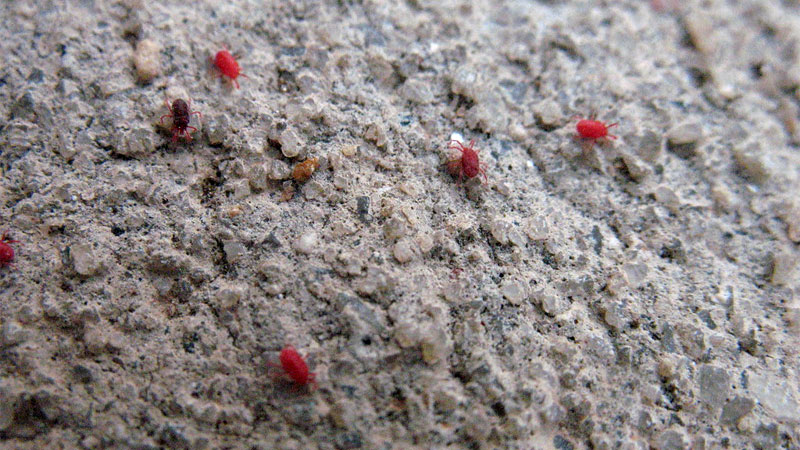
 Just tell me how to get rid of ’em.
Just tell me how to get rid of ’em.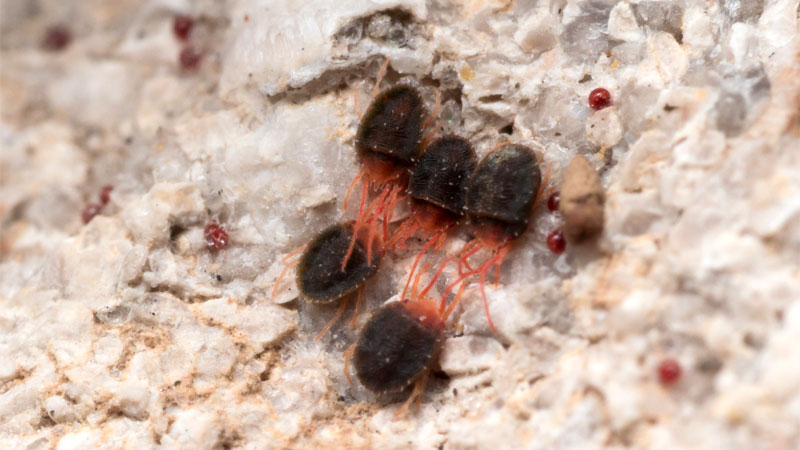
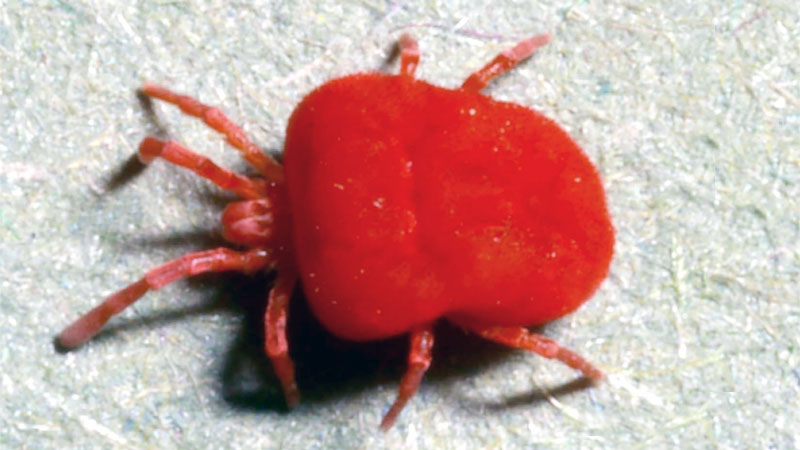
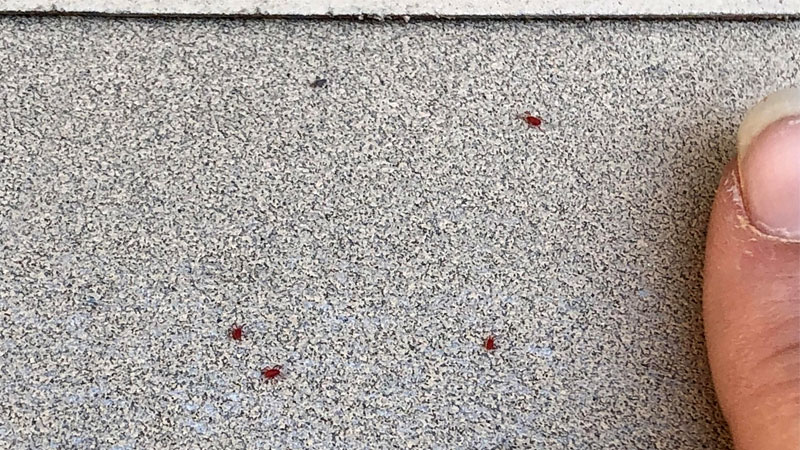



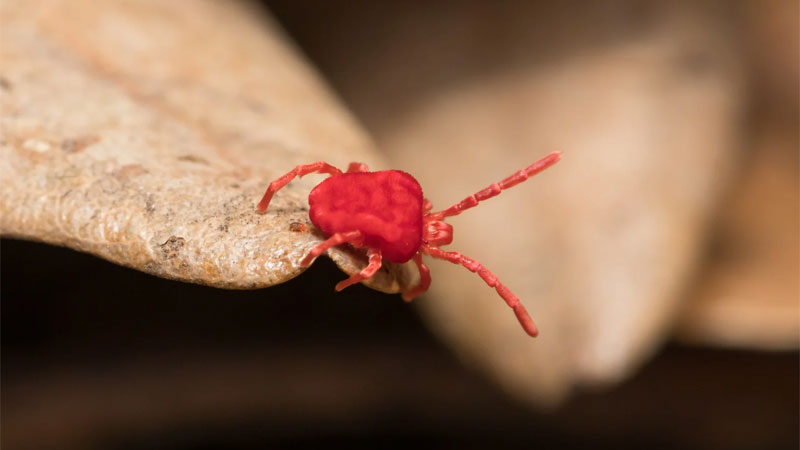



Hi Morgan,
Thanks for your information,that is really helpful,we just suffering this situation, we sealed all the wall cracks. But not sure what to do for toilet, I sealed the base of toilet, and they are still coming, do u have any suggestions about toilet? Thank you.
It’s almost certain that they are coming through an exterior wall or maybe hitched a ride on a plant. If there’s a window, that’s your likely entry point since they can get through the tiniest cracks.
Best thing to do is use Temprid FX and spray around the perimeter of your home’s exterior and especially outside the bathroom wall.
If you’re finding the mites in other parts of your home, might be a good idea for a 1-time service through a pest control company.
I was infested with clover mites last spring, summer, and fall throughout my house. They were on the walls, floors, etc. Had a professional three times and they finally went away. However, in March of this year, I notice some on my window sills. I was able to get some my hands on some Pyrid Aerosol which is banned in my state and will probably kill me before the mites! I’m at my wits end. Anything else I could use in the house that will kill them and maybe not so toxic?